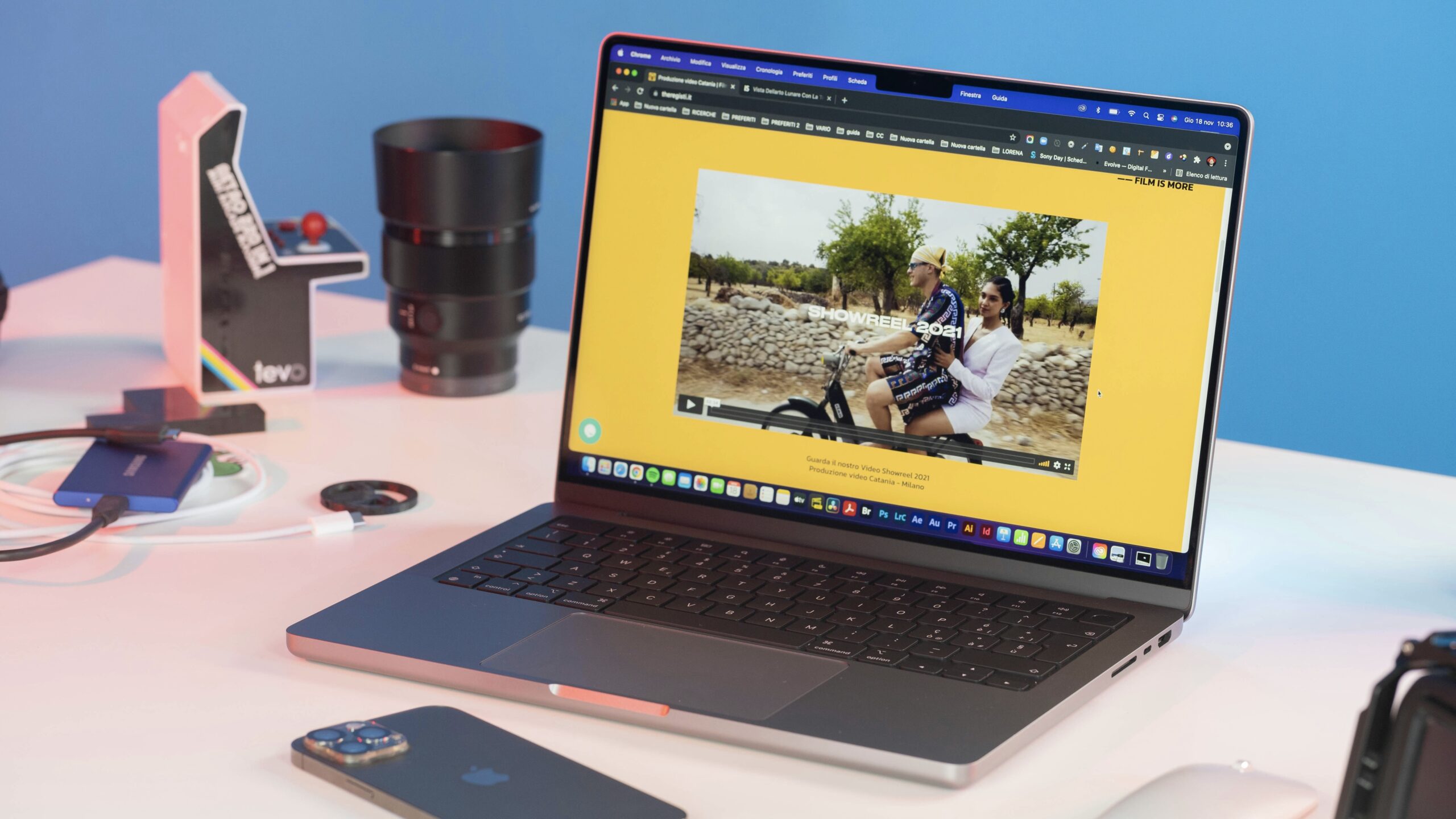By Gabe Moronta
In today’s competitive media landscape, video content is king. People are more likely to watch a video than read an article or listen to a podcast, and social media has made publishing videos online easier than ever.
Creating quality video content is a great way to connect with audiences, boost brand awareness, and share important messages in a digestible way. That said, creating engaging videos isn’t always easy. That’s why we put together this list of eight tips for creating engaging videos your audience will want to watch.
1. Know Your Audience

If you want your audience to engage with your videos, get to know them first. Meticulous audience research helps creators understand the topics their viewers are interested in and which types of content they engage with most.
Google Analytics and YouTube Analytics offer insights into user demographics, views, and common traffic sources for video content. As you begin publishing videos, these tools can help inform your video strategy and determine which types of videos resonate best with your audience.
For example, videos with higher views and watch times let you know which topics your audience engages with most. By analyzing common traffic sources, you can determine where your viewers spend the most time online and find the best channels to promote your content.
2. Tell a Story
People are more likely to engage with videos that tell a story. When planning your video, think about how you can structure your message as a story and add personal touches. For example, a product demo for a cybersecurity application could include the story of a real customer who used it successfully.
That said, your story should still be concise. People have short attention spans, and videos that are 2-4 minutes long generally perform the best. Once videos go past the four-minute mark, engagement starts to drop.
If you have an idea for a video but aren’t sure how to structure it, an AI video generator can help get your project across the finish line. Our video generator turns your story idea into a complete video using public stock footage or footage from your personal library.
3. Use High-Quality Footage
No one wants to watch a video that uses choppy, blurry, or grainy footage. Whether you shoot a video yourself or pull from stock video sites, ensure the footage is clear and well-lit. There are several simple methods you can use to improve your video’s quality, including using a tripod, filming in natural light, and touching up your video in post-production.
Adding high-quality B-roll can also make your video more engaging. B-roll is supplemental footage that adds visual interest, breaks up long shots, and provides context for the main message. For example, a video interview with an artist might include B-roll of the artist working on a painting to accompany the interview footage.
There are several ways to source B-roll, including YouTube, stock video sites, and your own camera or phone. Visla’s AI-powered footage recommendations can also help you select relevant, high-quality stock videos. Simply add your main footage, and the AI will choose the most relevant clips to match your script.
4. Enhance With Background Music
Background music can help set the tone of your video and make your soundtrack more interesting. When choosing background music, select a track appropriate for your topic that doesn’t overpower your voice-over or actors.
If you’re creating an instructional video or product demo, try choosing subtle music that adds interest without distracting from your message. Jazz, lo-fi, and instrumental music with an even tempo are all great options for these types of videos. Clear, dramatic music — like rock, electronic, and pop — should be reserved for ads, promotions, and storytelling videos meant to evoke strong emotions.
5. Add Voice-Over
Voice-over is a type of narration that accompanies video clips without showing the speaker. It is used in all kinds of videos, from long-form documentaries to quick how-tos.
Adding voice-over might seem like an obvious choice, but it can make your videos feel more polished, clear, and engaging when executed correctly. If you’re creating a how-to or tutorial video, try adding voice-over to clips that show the action you’re describing. Voice-over can provide context for clips recorded with little or no sound and make transitions smoother.
6. Choose an Attention-Grabbing Title
A video’s title is often the first thing people see before hitting “play,” so making a good first impression is important. When crafting your title, choose exact keywords that communicate the topic of your video in an interesting way. The best way to approach this is to consider your video’s purpose, its value, and how it addresses your audience’s pain points.
For example, “how-to” titles work well for educational videos. If a viewer wants to learn how to start a vlog, they’re likely to click on a video titled “How To Start A Vlog in 10 Steps” because it promises to answer their query.
7. Use Captions and Subtitles
Adding closed captions and subtitles improves engagement and makes it easier for those who are deaf or hard of hearing to enjoy your videos. Most social media platforms automatically mute videos, and many people watch videos without sound to avoid disturbing the people around them. If your video doesn’t provide captions or subtitles, users are more likely to scroll past without stopping to watch.
Fortunately, most modern video-sharing platforms generate captions automatically. For example, YouTube’s automatic captioning feature uses speech recognition technology to generate captions. Creators can also use auto-transcription tools to ensure the subtitles for their videos are clear and accurate.
8. Optimize for Social Media Platforms
Tailoring videos to the platforms they’re posted on is a simple way to boost engagement. When a user opens a social media app, they expect to see content optimized for the platform they’re watching on. For example, a TikTok or YouTube Shorts user would expect to see shorter, informal videos that are under two minutes long. Anything longer than that would struggle to hold their attention.
A video’s length and aspect ratio are two of the most important factors to consider when optimizing for social media. Check out the following chart for the ideal aspect ratios and video lengths for the most popular social platforms.
| Platform | Recommended Aspect Ratio | Ideal Length |
|---|---|---|
| TikTok | 9:16 | Under 30 seconds or over 2 minutes |
| YouTube Shorts | 9:16 | 30 seconds to 1 minute |
| Reels | 9:16 | 3-30 seconds |
| YouTube | 16:9 | 2-10 minutes |
| Instagram Feed | 4:5 | 1-5 minutes |
| Facebook Feed | 16:9 | 3 minutes |
| Twitter Feed | 1:1 | 45 seconds |
You don’t need expensive video tools or a professional film crew to create engaging videos. Following these tips can improve your videos’ performance and ensure they reach the right audience.
Try it out with Visla’s suite of user-friendly video editing and recording tools.

